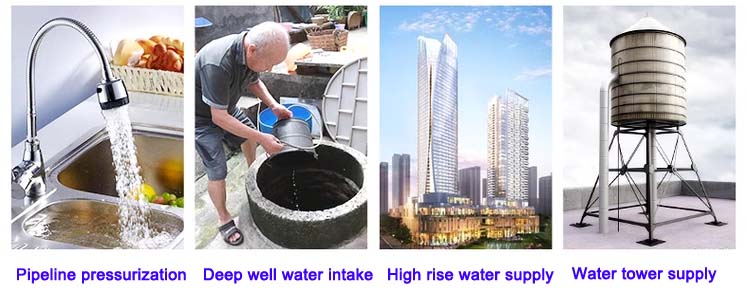English
- Afrikaans
- Albanian
- Amharic
- Arabic
- Armenian
- Azerbaijani
- Basque
- Belarusian
- Bengali
- Bosnian
- Bulgarian
- Catalan
- Cebuano
- Corsican
- Croatian
- Czech
- Danish
- Dutch
- English
- Esperanto
- Estonian
- Finnish
- French
- Frisian
- Galician
- Georgian
- German
- Greek
- Gujarati
- Haitian Creole
- hausa
- hawaiian
- Hebrew
- Hindi
- Miao
- Hungarian
- Icelandic
- igbo
- Indonesian
- irish
- Italian
- Japanese
- Javanese
- Kannada
- kazakh
- Khmer
- Rwandese
- Korean
- Kurdish
- Kyrgyz
- Lao
- Latin
- Latvian
- Lithuanian
- Luxembourgish
- Macedonian
- Malgashi
- Malay
- Malayalam
- Maltese
- Maori
- Marathi
- Mongolian
- Myanmar
- Nepali
- Norwegian
- Norwegian
- Occitan
- Pashto
- Persian
- Polish
- Portuguese
- Punjabi
- Romanian
- Russian
- Samoan
- Scottish Gaelic
- Serbian
- Sesotho
- Shona
- Sindhi
- Sinhala
- Slovak
- Slovenian
- Somali
- Spanish
- Sundanese
- Swahili
- Swedish
- Tagalog
- Tajik
- Tamil
- Tatar
- Telugu
- Thai
- Turkish
- Turkmen
- Ukrainian
- Urdu
- Uighur
- Uzbek
- Vietnamese
- Welsh
- Bantu
- Yiddish
- Yoruba
- Zulu
Telephone: +86 13120555503
Email: frank@cypump.com
Aug . 09, 2024 04:10 Back to list
Optimizing Gland Seal Performance for Slurry Pumps in Various Industrial Water Applications
Understanding Slurry Pump Gland Seal Water
Slurry pumps are essential in various industrial applications, particularly in sectors such as mining, mineral processing, and wastewater treatment. They are designed to handle abrasive slurries—mixtures of solids and liquids that are often corrosive and require careful management to ensure operational efficiency. One critical component of slurry pumps is the gland seal, which plays a pivotal role in maintaining the pump's performance and longevity. This article delves into the importance of gland seal water in slurry pumps.
The Role of Gland Seals
Gland seals are employed in slurry pumps to prevent leakage of the pumped materials, which can be detrimental to the environment and the operation of the pump itself. These seals create a barrier that helps maintain the integrity of the pump and minimize the escape of slurry or pollutants. There are several types of gland seals, but they all serve the purpose of controlling leakage while allowing for some wear and tear that can occur during the pump's operation.
Importance of Seal Water
Seal water is commonly used with gland seals in slurry pumps to enhance sealing effectiveness and prolong the life of the seals. The introduction of water creates a hydraulic barrier that helps to prevent abrasive slurries from entering the seal area. This is particularly important in specific applications where the slurry contains highly abrasive materials, which can accelerate wear on seal components.
1. Lubrication and Cooling The seal water acts as a lubricant, reducing friction between moving parts. Additionally, it helps to dissipate heat generated during the operation, which is essential for maintaining optimal performance.
slurry pump gland seal water

2. Controlling Leakage By using seal water, operators can create a controlled leakage system. While some leakage is inevitable, the controlled introduction of water can dilute the concentration of the slurry at the seal, minimizing damage and preventing environmental contamination.
3. Preventing Clogging In many cases, slurries can contain particles that may cause blockages in the pump system. Seal water helps to flush away these particles, keeping the seal area clear and functioning efficiently.
System Design and Considerations
When designing a slurry pump system, the integration of gland seal water must be carefully considered. The source of seal water, its quality, and flow rate are critical factors that will influence the overall efficiency and reliability of the pump. In many cases, a dedicated supply line for seal water is established to ensure a consistent flow, which helps maintain the necessary conditions within the gland seal area.
Operators must also monitor the seal water system to ensure it is functioning correctly. Regular maintenance checks should include examining the water supply for contaminants that could harm the pump's seals and the overall system. Additionally, maintaining the correct pressure and flow rate of the seal water is essential to prevent both overuse and underuse, which can lead to operational issues.
Conclusion
In summary, gland seal water is a crucial component in the operation of slurry pumps. Its role in lubrication, cooling, and controlling leakage cannot be overstated, especially in environments where abrasive materials are involved. Proper management of seal water not only enhances the operational efficiency of slurry pumps but also extends the lifespan of the equipment, ultimately resulting in reduced downtime and increased productivity. As industries continue to prioritize sustainability and efficiency, understanding the intricacies of slurry pump systems, including the effective use of gland seal water, will be essential for success.
-
ISG Series Vertical Pipeline Pump - Chi Yuan Pumps Co., LTD.|High Efficiency, Energy Conservation, Low Noise
NewsJul.29,2025
-
ISG Series Vertical Pipeline Pump-Chi Yuan Pumps Co., LTD.|High Efficiency&Energy-Saving
NewsJul.29,2025
-
ISG Series Vertical Pipeline Pump - Chi Yuan Pumps Co., LTD. | High Efficiency, Energy-Saving
NewsJul.29,2025
-
ISG Series Pipeline Pump - Chi Yuan Pumps | High Efficiency, Low Noise
NewsJul.29,2025
-
High-Efficiency Vertical Slurry Pumps for Mining & Industry Solutions
NewsJul.29,2025
-
High-Efficiency Pipeline Pump Solutions for Every Pipeline Pump Station
NewsJul.29,2025










